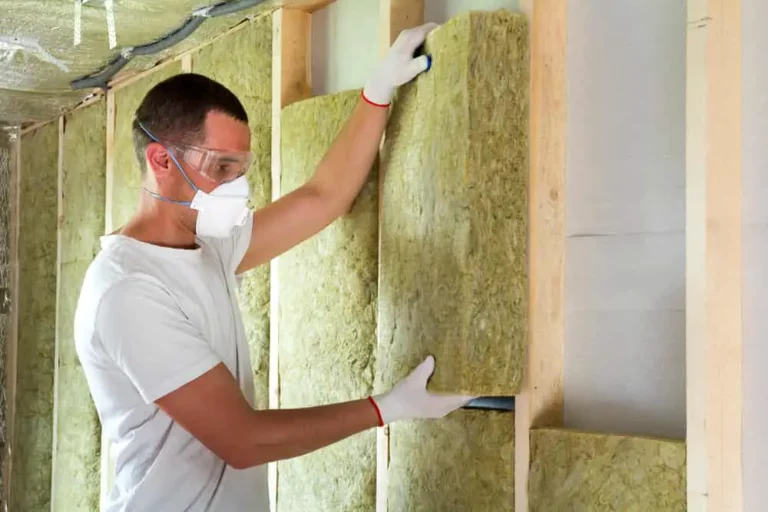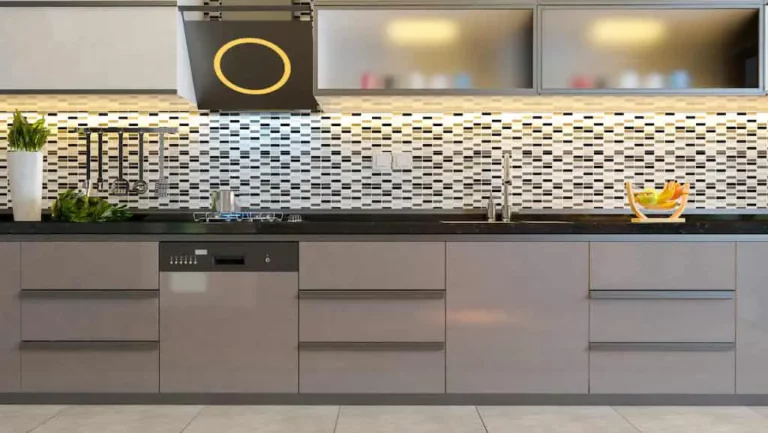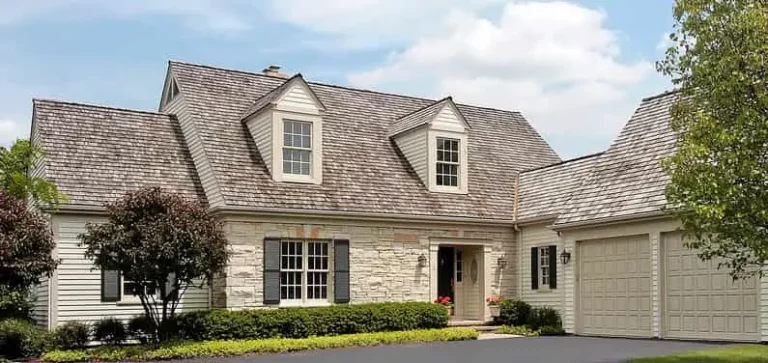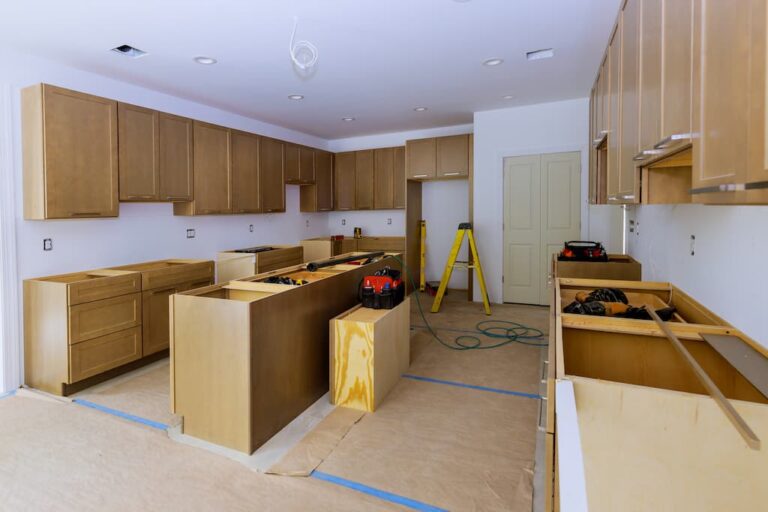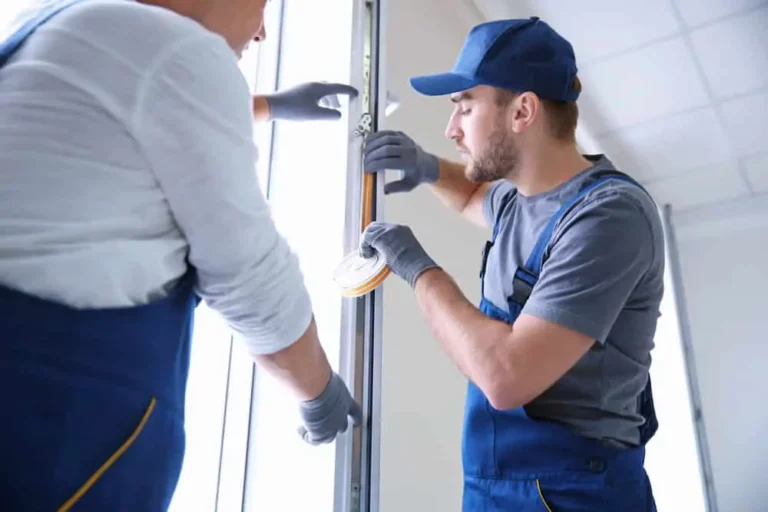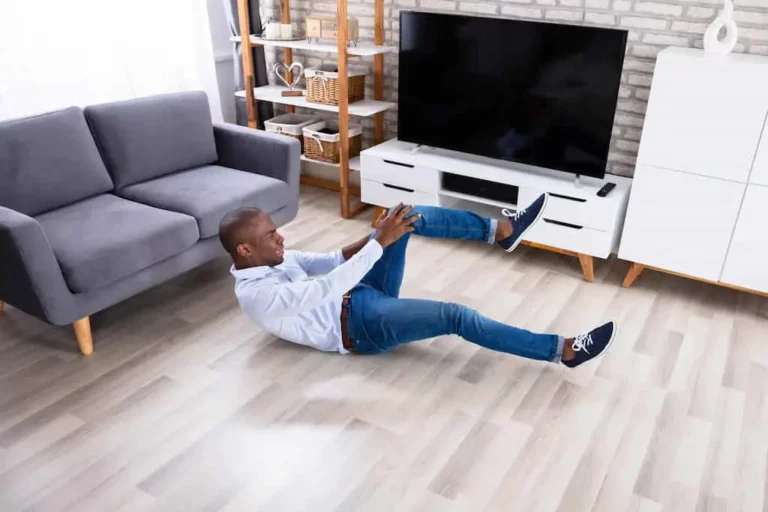Does Vinyl Flooring Need Underlayment?
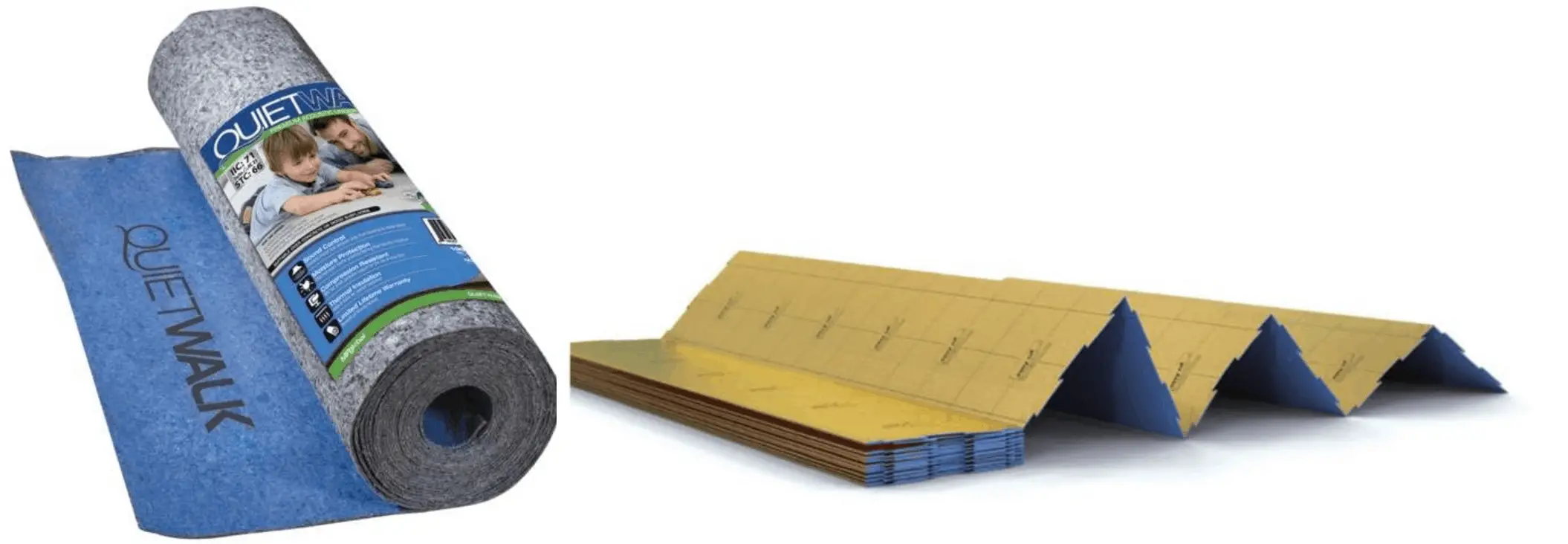
Starting a new flooring project on your home means that you need to do things right the first time, or suffer the consequences of having to redo your project. It can be a pain, I know—especially when it comes to figuring out how to do your project’s underlayment.
Does vinyl flooring need underlayment? It all depends on the type of vinyl flooring you choose to install. Vinyl plank flooring doesn’t require it, but luxury vinyl tile and others will. If your surface isn’t smooth or you’re concerned about moisture, underlayment might be a good add-on to consider.
Trying to plan out what kind of vinyl flooring you want to install, plus putting together a budget for underlayment, is tricky. If you’re concerned about your project and need guidance regarding your project, this guide is for you.
Does Vinyl Flooring Need Underlayment?
For the most part, modern vinyl flooring is designed to be easy to install and to work with surfaces of almost any type. That’s why most vinyl flooring options that are being sold today won’t require underlayment in order to be successfully installed.
That being said, there are moments where an underlayment might make sense. We’re going to get to that in the next step.
When Does It Make Sense To Get A Vinyl Flooring Underlayment?
Though there’s usually no absolute need to get underlayment, there are several moments when getting underlayment can make sense. These include:
- If you have concrete flooring. Vinyl flooring underlayment can make it easier to install your flooring on concrete, and also can help improve the lifespan of your floors.
- If you want to soundproof your room. Underlayment can help reduce the amount of noise footsteps make, which can decrease the overall amount of reverberation.
- If you want to add some warmth or insulation to your room. Underlayment can help add a warm touch to your home, even on the coldest of days.
- If you are concerned about the possibility of mold or excess warmth. There are specialty underlay
- If the flooring you’re working with isn’t smooth. Should this be the issue, you will have to choose between underlay and sanding it down. Underlays are the easier option.
How Thick Should Underlayment For Vinyl Flooring Be?
If you choose to use underlayment as part of your new flooring project, you might be surprised at how thin underlay usually is. Most vinyl flooring underlay is 1 to 1 ½ millimeter in thickness, making it more like a thin sheet rather than traditional underlay would be.
Can You Put Vinyl Flooring Over Tile?
With all the talk about vinyl flooring underlays, it’s unsurprising that many people try to find other shortcuts to get the benefits of an underlay without the work. One of the common ideas people have is to simply put vinyl flooring over tile that’s already in the kitchen.
Believe it or not, this is actually a pretty good way to reduce the amount of work you need to do and still get decent results. However, there’s a caveat. If you choose to put vinyl flooring over tile you already have there, there’s a small chance that you might see or feel indentations in the vinyl due to the mismatched surface.
Thankfully, you have a fairly easy way to take care of this minor issue. The best way to reduce the indentations and also make your vinyl stay is to use a thicker underlayment when you’re installing it.
Can You Put Vinyl Flooring Over Wood?
Vinyl flooring actually does very well over wood. With many types of vinyl, wood subfloors are actually the most recommended material. However, you will need to prep the subfloor with plywood paneling and sanding prior to installation.
When placing vinyl flooring on a wooden subfloor, it’s important to remember that you should not install it directly on hardwood. This can damage the vinyl and also damage the wood your house is built with.
How Important Is An Underlayment for Vinyl On Concrete?
If there’s one floor base that should make you seriously consider using underlayment, it’s concrete. Placing vinyl on direct concrete can harm the underside of the vinyl, and also can make walking on the flooring a rather uncomfortable matter.
While you never have to have an underlayment with modern vinyl flooring, you absolutely should have it in some cases. For the sake of your vinyl flooring, your room’s acoustics, and your feet, it’s best to try to get some kind of underlay going on before you install it.
Can All Concrete Sustain Vinyl Flooring?
It’s important to note that concrete doesn’t always jive with vinyl flooring, making it one of the very few subfloors that might not be good with vinyl. Whether or not your concrete will be able to handle vinyl all depends on how much moisture the concrete is retaining.
Concrete that has too much moisture on a typical day should not be used as a base for vinyl flooring. Along with causing difficulties when it comes to getting the floor to adhere, an overly moist concrete subfloor can also contribute to mold and mildew.
This is why it’s best to do a moisture test before you install standard vinyl on concrete flooring—or even plunk down money for the tiling. Should you be unable to install it directly on concrete, you should consider opting for waterproof vinyl flooring and follow up your plans with a flooring expert.
While waterproof vinyl can fix some of the issues that moisture gives, it won’t always fix them all. It’s better to be safe than sorry.
What Is The Best Underlayment For Vinyl Plank Flooring On Concrete?
One might want to argue that the best underlayment for placing vinyl planks on concrete is “any,” but that’s not necessarily true. There are certain underlay types that work better than others. The most recommended include:
- Vapor Barrier Underlayment. With rooms that have a concrete base, chances are high that you might have an issue with moisture. This is especially true if the vinyl you’re working with is going to be installed in a basement. Getting a reliable vapor barrier underlayment with soundproofing like QuietWalk is a good idea.
- Acoustic Underlayment. A close relative of the vapor barrier underlay genre is the acoustic underlay. This is meant to help with the jarring echoes that often happen when walking on vinyl installed over concrete. The updated QuietWalk series from MP Global Products works well here.
- Felt Underlayment. If you are concerned about keeping your room warm, then it’s a bad idea to go without underlayment on a concrete floor. A felt underlayment can help you make the most of your room’s insulation, which is why this moisture-proof insulation underlayment might be a good choice.
| QuietWalk Plus – 100 Sq Ft | QuietWalk – 100 Sq Ft | QuietWalk – 360 Sq Ft | |
| Laminate Flooring | X | X | X |
| Floating Engineered Wood | X | X | X |
| Nail Down Flooring | X | ||
| Glue Down Flooring | X | ||
| Luxury Vinyl Flooring (LVT) | Floating and Glue Down (5mm + thick) | Floating (5mm + thick) | Floating (5mm + thick) |
| IIC Sound Rating – Impact Vibration Sounds – ( Higher the better) | 71 | 71 | 71 |
| STC Sound Rating ( Higher the better) | 66 | 66 | 66 |
| Delta IIC Sound Rating (Higher the better) | 22 | 22 | 22 |
| R-Value | 0.58 | 0.58 | 0.58 |
| Moisture Protection | .423 lbs / 1000 sq ft / 24 hours | .423 lbs / 1000 sq ft / 24 hours | .423 lbs / 1000 sq ft / 24 hours |
Can You Put Vinyl Flooring In A Basement?
If you want to put vinyl flooring in your basement, you can. However, you will need to make sure to choose a type of flooring that will work with basements. Waterproof vinyl flooring is the only type you should really consider when planning a floor for a basement.
Since basements are prone to flooding and water damage, getting a waterproof type of vinyl flooring will help prevent serious damage.
Vinyl Flooring With Underlay Attached: Pros and Cons
If you want to add that extra cushioning, you might want to take a look at getting vinyl flooring that comes prepped with underlays. Though these flooring options are plentiful, they still have their own perks and pitfalls. Here’s what you need to know about each…
The Pros:
- Preprepped vinyl takes out the extra work of having underlay installed. If you were worried about dragging out the workload or having higher work times, a pre-fabricated underlay setup could be a good way to avoid additional steps.
- This kind of vinyl carries all the perks of having an underlay. Your flooring will be more insulated, more capable of handling noise, and also will last longer than typical flooring.
- Minimal damage will be done if you’re installing the vinyl flooring on a rough surface. Having some underlay will prevent bumps and bangs from scratching your vinyl flooring.
- Preprepared vinyl flooring also can last longer than standard vinyl. Since you already have underlay available, you can expect the flooring to last longer and keep up against elements like water or heat.
The Cons:
- Not all vinyl flooring patterns are available with underlay included. If you were hoping for very exotic options, you might be out of luck. The majority of vinyl flooring that has underlays also happens to be fairly mainstream.
- You don’t get to choose the underlay. Different underlays will have different focuses involved with them. Some have a high sound grade, while others are made to be water-resistant. If you have a prefab tile with underlay, you won’t be able to specialize what your underlay does.
- Cost is an issue. Vinyl flooring that comes equipped with an underlay isn’t going to be cheap. In many cases, it’s cheaper to just get a regular underlay instead.
- Attached underlay may not be as water-resistant as regular underlay. Depending on how it’s attached and the type of underlay that’s used, you might have a slightly increased risk of having your tiling exposed to water.
How Should You Prepare Your Floor For Vinyl Flooring Installation?
The biggest thing you need to keep in mind when you’re looking to install vinyl flooring is kicking off the project in the right way. That means that you need to prep the area well. Here’s what you have to do before vinyl can be placed on top:
- Remove any vinyl flooring that is already there, along with the current underlayment. This might sound obvious, but it still is worth stating. You should always do your best to start off with a clean slate—and that includes removing vinyl that’s already there.
- With concrete flooring, make sure that you do a moisture test. A moisture test can be done by duct taping a square of vinyl to the floor and waiting 72 hours. Remove the vinyl. If the tape comes off easily, the surface is too moist to install vinyl.
- Clean and smooth out the flooring underneath. In order for vinyl to be properly installed, you will need to have a smooth, clean base. We strongly suggest scraping away any excess residue that might be on your floor, then giving the floor a good wipe-down with an all-purpose cleaner.
- If you’re installing on hardwood flooring, prepare a base using plywood. This is actually a fairly involved process that involves placing several inches of plywood on top of your flooring, sanding it down, and securing the plywood to your subfloor every six inches. Expect this process to take a couple of days’ time.
- If you had vinyl flooring installed prior to this new project or if you are working with concrete, add sealant to any cracks you notice. Over time, many vinyl subfloors end up getting cracks that can make installation difficult. With concrete, having uneven flooring can also become problematic. The sealant can be used to fill gaps and dips easily as well.
- If you used any patching or sealant, let it dry then sand it down with medium-grade sandpaper. This will help smooth things out and make the flooring stick.
- Vacuum the area. To remove any leftover debris from sanding your flooring down, use a vacuum to finish the preparation.
- Once your area has been sufficiently prepared, you can lay out your underlay and proceed with your installation. It might be a long process, but it will pay off in terms of flooring quality. When installing your underlay, make sure to leave an extra two inches of material past the edge of the room. These will be cut off during the actual vinyl install.
What Happens If You Install Vinyl Flooring On A Poorly-Prepped Subfloor?
If you make the decision to install vinyl flooring on a subfloor that hasn’t been properly prepared, it’s safe to say that you should expect things to go pear-shaped sooner rather than later. Depending on what corners you choose to cut, not prepping your floor can result in:
- You might be unable to successfully install the vinyl flooring. High levels of dust or extremely uneven flooring can cause projects to fail mid-installation.
- The vinyl flooring’s lifespan will be shortened. Depending on what you skip out on, the vinyl might have its lifespan cut by months or even years. In some cases, the damage that you do to your vinyl may make it unrepairable.
- Badly-prepped surfaced can negate the use of underlay. This means you’ll have wasted your money on something that could have made your flooring phenomenal.
- There’s also a chance that it may force you to repair your vinyl flooring while it’s installed. Cracked vinyl tiles are a thing, you know. Depending on the type of damage that you cause through bad preparation, you also might end up ruining the underlay as a result.
Should I Call A Professional Floor Installation Team?
If you aren’t a DIY person, or if you are worried that you won’t do the preparation correctly, calling a professional team makes sense. A good rule of thumb would be to avoid doing it on your own if you don’t have the time, tools, or skills to do it. If you aren’t sure if you are capable, err on the side of caution.
That being said, installing vinyl is a far easier flooring project than trying to install wood or doing tiling in many cases. Most people who enjoy doing their own home improvement projects are alright with installing vinyl flooring on their own.
Related Questions
- Can I put heavy appliances on vinyl flooring? You can! Vinyl flooring has come a long way since its initial days of creation. Most vinyl flooring is designed to withstand heavy weights by default, and that includes large items like washing machines.
- Will I need to protect my vinyl flooring from my dog or wheeled office chair? Most vinyl flooring has a tough coating that is designed to make it scratch-resistant, but it’s important to remember that there’s no such thing as 100% scratch-proof vinyl. Dogs won’t usually do much damage, but an office chair can.
- Can vinyl flooring be used for outdoor settings? Though vinyl is hardy, it’s not a good match for outdoor or semi-outdoor settings. Both UV radiation and water exposure will damage the vinyl and reduce its ability to be a reliable, visually appealing type of flooring.
- Will vinyl flooring start to expand? It all depends on how the vinyl is made. With a waterproof core, you should expect to see expansion only in extreme circumstance. If you have flooring without waterproof coring, then you should expect to see noticeable expansion and contraction on a regular basis.
- Can vinyl planks be installed over an area with radiant heat? While this used to be a major issue in the past, the majority of vinyl planks on the market are now made to be heat-resistant. If you aren’t sure whether your vinyl is, ask the manufacturer about its specs.
